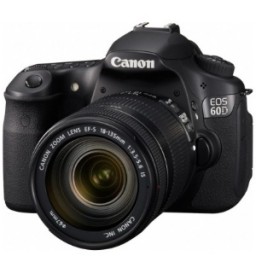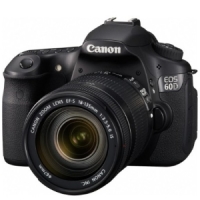Determining which SLR camera is perfect for your needs largely depends on what kind of pictures you like to take. There are many different types of photography and each requires different features, lenses, and accessories.
Does that mean that each SLR camera is specifically made for one type of photography? No, definitely not.
Most digital SLR camera’s will allow you to shoot amazing, high quality pictures in any situation, however; choosing a camera that excels in certain technological areas can greatly improve your photography experience.
This reasoning applies to lenses even more than it does to cameras.
Briefly put, if you’re serious about photography, you should get a camera that fits your style of shooting.
Let’s look at some of the core features you should look for in a camera and how important each of these features are for different types of photography.

Megapixels
The first thing most entry-level SLR photographers look at when purchasing a new camera is the amount of megapixels it can capture images in.
This is a bit ironic, because typically this should be the least of their worries.
Most modern SLR camera’s shoot at at least 12 megapixels or more and unless you are a professional photographer who needs to print billboard-sized images, 12 megapixels will be more than enough.
Especially because these days, hardly anyone prints their pictures anymore.
If you plan on shooting a lot of landscape and nature pictures, you could think about getting a camera with a higher than average megapixel level, but otherwise 12 should really be plenty.
Image Sensors
Essentially the “film” of the camera, image sensors capture the light to create a picture.
There are two types of sensors; CCD and CMOS.
Although CCD sensors produce higher quality images than CMOS sensors do, most popular SLR camera’s have CMOS sensors.
This is for the simple reason that CMOS processors are far easier to produce and are therefore much cheaper than CCD processors.
CCD sensors also consume up to 100 times more power than CMOS sensors, giving camera’s a far shorter battery life.
CCD sensors are another feature that should only be considered by professionals.
Having a quality image sensor is important for all types of photography.
Shutter Speed
If your photography style involves rapid continuous shooting of moving objects, you need a camera with a high shutter speed.
A camera’s shutter speed determines how many shots it can take per second (also called fps; frames per second).
This is again important for action, sports, active outdoors, and spontaneous photography, as well as nature photography, where it can often be difficult to get the perfect picture with just one shot (birds and butterflies are very uncooperative posers).
ISO
A camera’s ISO level determines its sensitivity to light.
The higher a camera’s ISO level, the more sensitive it is to light.
This means that if you plan to take a lot of pictures in situations with dim or low lighting, you will want to get a camera with a high ISO level.
The benefit of having a high ISO level used to be diminished because of the digital noise it produced in images, but today’s image sensors include noise reduction which has gotten rid of this problem almost entirely.
Image Stabilization
Most recent digital SLR’s have a feature called image stabilization.
As the name suggests, this feature ensures that pictures turn out clear and sharp, regardless of how much the camera shakes in a photographers grip.
It’s obvious then, that having a camera with a good image stabilizer is particularly important for action, sports, active outdoors, and spontaneous photography or any other type of photography that involves a lot of movement on the photographer’s part.
Image stabilization is included in camera bodies and in lenses and many SLR camera brands offer it in both.
LCD Display
One of the great benefits of having a modern digital camera is having a big LCD screen on the back that allow you to view your subject and frame when taking a shot and reviewing shots you’ve taken in great detail.
Two things to consider with LCD screens are the size and the resolution.
The bigger the screen and the greater the resolution, the more detail the screen will be able to show. Another thing you may want to consider is to get a camera with a rotating (flip) screen such as the Canon 60D.
The ability to move the screen independently from the camera allows you to take shots at angles that would be very difficult to achieve with a camera that has a regular fixed position screen.
Lenses
Lenses are often even much more style-oriented than camera’s and, when using the wrong lens, it can be very difficult to have a shot turn out the way you intended it to.
Fortunately, the most popular lenses are known as multi-purpose lenses that will deliver great shots under most conditions.
Yet, for more advanced types of photography, photographers should consider expanding their lens kit to suit a wider array of situations.
I say “wider array,” but individually, style-oriented lenses often cover a very narrow range of shooting.
Luckily, that also makes it very easy to select the right lens as the product descriptions of such lenses clearly explain their purposes.
Feel and Build
A common mistake people make when buying a new camera is to browse camera’s online until they found the one with the best features and to then place the order without ever having held the camera model they just bought.
I’m not saying you shouldn’t buy your camera online, in fact, I prefer I you do because that’s how I make my money smile You will certainly get the best price online, but I recommend that you go to a store first to try out the models you are considering.
A camera needs to fit in your hands properly and you should be able to handle it with ease.
If you plan to carry it a lot, you also want to make sure that it’s not too heavy for you and not too bulky either.
Having a lightweight, compact camera is crucial for everyday, travel, and active outdoors photography.
Other things to consider are a camera’s sturdiness and how weather-proof it is.
Budget
As you can see, it’s not wise to just get the most expensive camera that comes with lots of bells an whistles.
Instead, think about what kind of pictures you love to take, determine which features you need for it, and then look at camera models that are below the budget you set aside for it.
You will likely find that there are plenty of camera models that are less expensive than you expected and will be just perfect for your needs.
Also consider last year’s models instead of the latest ones.
The difference between camera models that were release one year apart are often negligible, but the price difference definitely isn’t.
Once you selected the perfect model and saved some money, go spend that money on a quality lens or important accessories you did not think about buying such as a quality tripod or extra batteries.
